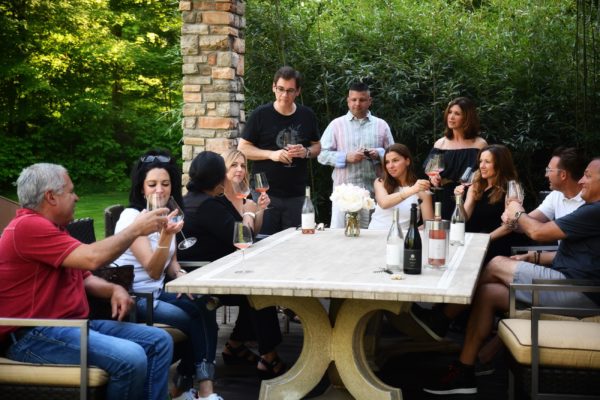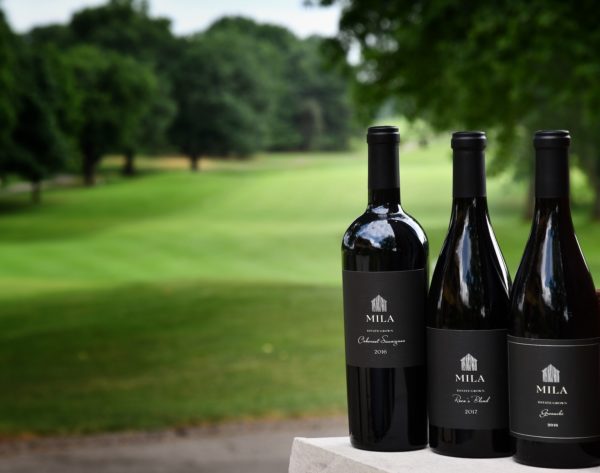waiting for veraison
Dear Friends,
We’re in the dog days of summer, when Sirius, the “dog star,” in the canis majoris (“greater dog”) constellation, is at its brightest. In the sweltering heat of late July and early August, we’d really like to just sit in Adirondack chairs and drink good wine.
But there is work to do in the vineyard. Within the next couple of weeks, we will see veraison, when the green grape bunches begin to turn color.
In preparation for veraison, our vineyard team has been busy thinning leaves (to increase the amount of sun on the fruit bunches), and dropping fruit.
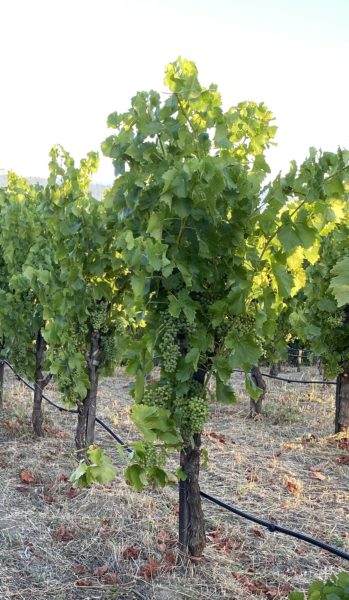
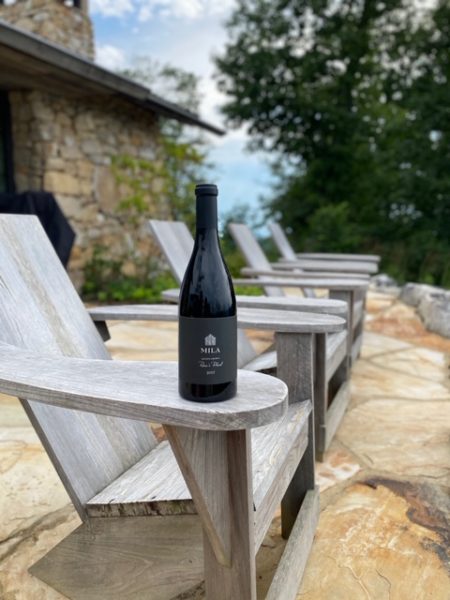
Taking in the view from the Firetower at Blackberry Mountain Resort in Tennessee.
This practice, also called green harvest, seems at first glance to be irrational. Most farmers aim to grow the maximum quantity of produce. Quality-oriented vineyards, however, pride themselves on harvesting less fruit rather than more. Each vine is limited in its ability to impart character to its fruit, so the fewer the bunches, the more flavorful each grape will be.
Over the past month, we have pruned underdeveloped fruit clusters off our vines and dropped them to the ground, where they will decompose over time and become compost. As soon as veraison occurs, we’ll go through and cull more bunches—those that aren’t ripening as well as their peers.
The goal of leaf thinning and green harvesting is achieving a balanced leaf-to-fruit ratio, which will, in turn, result in a balanced wine.
This work is labor-intensive and can’t be done by a machine. Hand-trimming leaves and fruit off 20,000 individual plants twice before harvest takes patience and sweat equity. But when we sit down and enjoy our wine at the end of a long day, we know it was worthwhile.

you asked for it. we did it!
memberships now available
We have heard from many of you that you want guaranteed access to our wines. We are pleased to extend to you an advance invitation to join our 6- or 12-bottle wine clubs. Memberships include free tastings at our Sonoma winery for up to six people, priority invitations to upcoming tasting events, and access to our private epicurean social club, Sonoma Table, coming soon to Brecksville, Ohio.
Wines are shipped to your doorstep twice annually. Selections are customizable upon request, and members receive a 20% discount.
Thank you for all of your support for our limited-production, biodynamically farmed, world-class wines!
what’s on loretta’s sonoma table:
summertime fish tacos
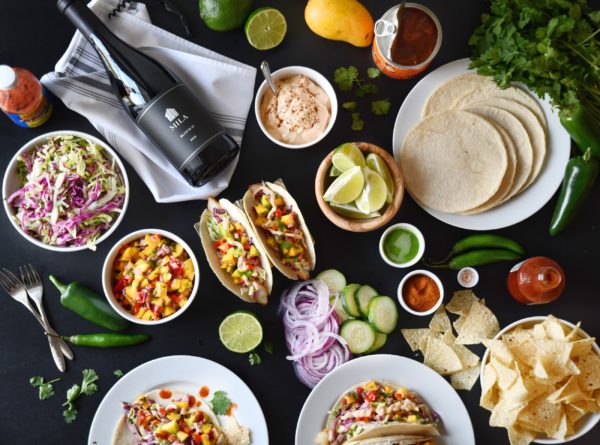
In 2003, when we purchased our wine farm in Sonoma, we discovered the California summertime pleasure that is fish tacos made from fresh, locally sourced ingredients. We have found ourselves going back again and again to the food trucks at the Healdsburg Farmers Market and to Diavola Restaurant in Geyserville for their takes on this classic, casual dish.
I’ve tried different recipes at home, and we have decided that the following combination of grilled fish, sweet mango salsa, spicy Serrano sauce, and crisp cabbage slaw is the most delectable. The interplay of flavors and textures is absolutely vibrant on the palate. (And to give credit where it’s due, I picked up the Cashew Chipotle Crema recipe from The Ranch Malibu’s new cookbook Food, Food, Food.)
Now for the big question: Can you drink a red wine like our Block II Grenache with fish tacos? Absolutely! The wine’s viscous texture coats the tongue with fruity strawberry notes that complement the powerful heat of the ancho, jalapeño, and Serrano peppers. Yes, red wine does go with seafood.
For a print-friendly version of the following recipe, click here: RECIPE
ingredients
Fish:
1 pound white flaky fish, such as cod or halibut
¼ cup avocado oil, and more for grill
1 lime, juiced
1 tablespoon ancho chili powder
1 jalapeño, coarsely chopped
1/4 cup chopped fresh cilantro leaves
8 tortillas (I recommend corn tortillas)
Garnishes:
MANGO SALSA
4 Champagne mangoes, peeled and diced
½ red onion, diced
1 red pepper, diced
1 jalapeno, diced
1 lime, juiced
¼ cup cilantro, chopped
1 teaspoon salt
CASHEW CHIPOTLE CREMA
1 cup cashews, soaked at least 2 hours and drained
½ cup water (or more if needed to get the right consistency)
1 tablespoon nutritional yeast
2 canned chipotle chiles in adobo sauce
1 lime, juiced
2 garlic cloves
salt and pepper, to taste
SERRANO SAUCE
6 Serrano peppers, chopped
1 garlic clove
½ cup water
1 teaspoon salt
SLAW
4 cups green cabbage, thinly sliced
2 cups red cabbage, thinly sliced
1/3 cup cilantro, chopped
¼ cup rice vinegar
2 tablespoons olive oil
1 teaspoon salt
HOT SAUCE (optional)
I recommend Elyucateco Salsa Picante de Chile Habañero
directions
To prepare garnishes, toss together all mango salsa ingredients. Purée all Serrano sauce ingredients. Toss all slaw ingredients. Purée cashew chipotle crema ingredients. Set each topping aside separately for serving. Garnishes can be refrigerated for up to 4 days.
To prep the fish, preheat grill to medium-high heat. Place fish in a medium-sized casserole dish and season with salt. Whisk together the oil, lime juice, ancho chili powder, jalapeño, and cilantro and pour over the fish. Marinate for 15-20 minutes.
Remove fish from marinade and place onto hot grill. Grill fish for 4 minutes, then flip for 30 seconds and remove. Allow to rest for 5 minutes, then flake fish with a fork.
To serve, place tortillas on hot grill for 20 seconds per side. Divide fish among tortillas and garnish with prepped toppings, to taste.
Serves 4-6.
notes from the cellar:
rolling out the barrels
We’re reminded why fine wine is so expensive right now, as we place our orders for new cooperage. Every new French barrel we order costs approximately €1,000 ($1,200).
But it’s worth it: Our Cabernet Sauvignon gets its structure and age-worthiness, in part, from the two years it spends aging in new French oak. After those two years, we can age other varieties, like Grenache, in the gently used barrels.
We purchase from four different tonnelleries in order to build depth and nuance in our wines. Each barrel brings something different to the character of the wine, whether it’s fragrance, mouthfeel, or something else.
When we spent three days at François Frères Tonnelerie in Burgundy, we saw the barrel-making process first-hand. First, the trees are felled and sawed into staves.
The staves then sit out in the cooperage yard to air-dry for two to three years, soaking up the sun, rain, and snow until they turn gray. This time strengthens the barrel and keeps it from swelling up when it’s filled with wine.
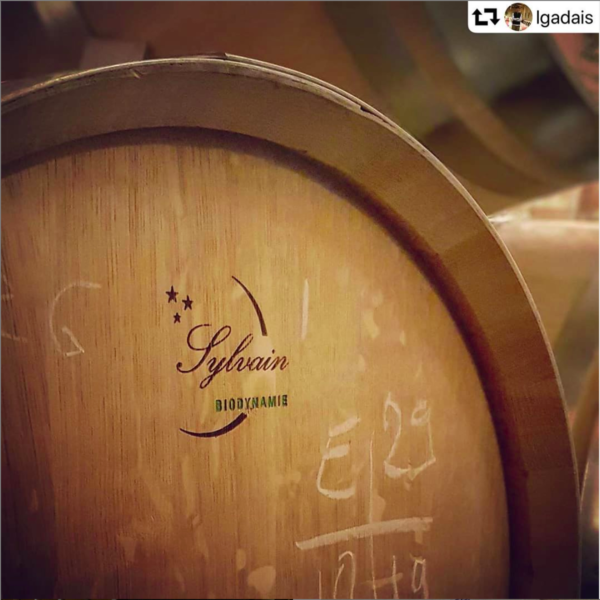
Finally, the staves are fitted together, and the barrel is toasted. No matter where we source them from, our barrels share a few characteristics: They are all thin-staved, air-dried, and medium toast. (Read more about these terms below.)
We work with oak from Taransaud, Mercurey, Boutes, and—most exciting for us—Sylvain, which produces biodynamic barrels.
learn our language
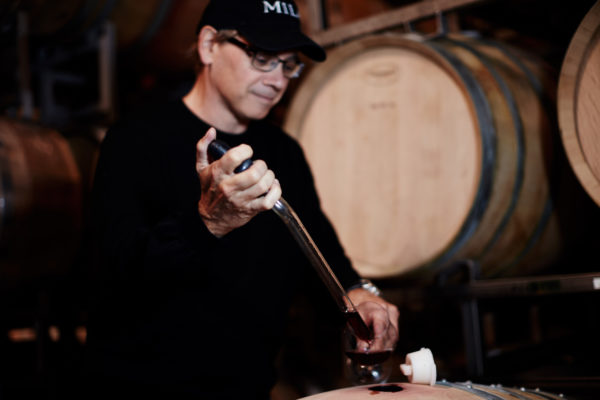
The article above is about selecting barrels for use in the winery. There’s another term, “barrel select,” that means something else. It’s a wine blended from the best barrels of the vintage.
Once those pricey new oak barrels have held wine for a couple of years, winemakers refer to them as neutral. You’ll often read that a white wine, like Chardonnay, has aged in “neutral oak” (we often omit the word “barrels”) because the vintner was aiming to achieve a soft texture and ageability without imparting a smoky flavor or astringent texture.
Barrels in general are referred to as cooperage, and a barrel-maker, in English, is a cooper. In French, that’s tonnelier (also spelled tonnellier). Tonnelleries are barrel-making businesses.
We prefer to use thin-staved barrels, which are thin in depth rather than width. The thin walls of these barrels allow for a greater amount of oxygen transmission, resulting in, we believe, a smoother wine. And we opt for barrels with medium toast, or medium char. As this article explains, tonneliers burn the insides of barrels to lightly caramelize them. A medium-toast barrel should impart aromatics like vanilla, cocoa, caramel, and coconut to wine. Do you pick up these notes in our Cabernet Sauvignon?
events
August 21: Winemaker Dinner
Firestone Country Club, Akron, OH
6:30-9:30 PM • contact Shelley at 440-915-5748 for tickets
Also this summer, in Ohio: Intimate Back Porch Parties!
(Contact us at info@milafamilyvineyards.com to learn more.)
Or: Book a private tasting at our Sonoma winery.
(Contact Shelley at 440-915-5748 to arrange your appointment.)
October 23: Gran Fondo Hincapie Celebrity Chef Dinner, Hotel Domestique, Travelers Rest, SC
November 5: T.J. Martell Foundation Best Cellars Dinner, Cleveland, OH
